User:ApeKattQuest, MonkeyPython/v*na: Difference between revisions
(a way to improve this would be to make it a table with images (we can hotlink to commons) to the right!) |
No edit summary |
||
| (12 intermediate revisions by the same user not shown) | |||
| Line 2: | Line 2: | ||
Veena: |
Veena: |
||
<table border="1"> |
|||
<tr> |
|||
<td>Cell 1</td> |
|||
<td>Cell 2</td> |
|||
</tr> |
|||
</table> |
|||
<table border="1"> |
|||
'''sarangi''' [https://www.wikidata.org/wiki/Q608650 wd] [https://en.wikipedia.org/wiki/Sarangi en] [https://musicbrainz.org/instrument/79f5331d-d17c-4c2e-8ad0-44144432a754 mb]<br> |
|||
<tr> |
|||
hindustani classical music, rajasthani folk sarangi, nepali sarangi [https://www.wikidata.org/wiki/Q7423131 wd] [https://en.wikipedia.org/wiki/Sarangi_(Nepali) en] MB!(?)<br> |
|||
<td>'''sarangi''' [https://www.wikidata.org/wiki/Q608650 wd] [https://en.wikipedia.org/wiki/Sarangi en] [https://musicbrainz.org/instrument/79f5331d-d17c-4c2e-8ad0-44144432a754 mb]<br> |
|||
hindustani classical music, rajasthani folk sarangi, <br> |
|||
sarangi type:<br> |
sarangi type:<br> |
||
kashmir (saran)<br> |
kashmir (saran)<br> |
||
south afghanistan (sarang)<br> |
south afghanistan (sarang)<br> |
||
jammu (saranga)<br> |
jammu (saranga)<br></td> |
||
<td>https://graphic.nobody.jp/musical_picture/sarangi_india_2.jpg</td> |
|||
<br> |
|||
</tr> |
|||
<tr> |
|||
.type of lute, evolved from the rabab includes this and the ghaychak [https://www.wikidata.org/wiki/Q1521728 wd] [https://en.wikipedia.org/wiki/Ghaychak en] [https://musicbrainz.org/instrument/d50ba107-4930-4e0b-8b3f-ffbea4a1ade1 mb] [https://tickets.metabrainz.org/browse/INST-371 jira] in its family evolved from the kobyz [https://www.wikidata.org/wiki/Q1778051 wd] [https://en.wikipedia.org/wiki/Kobyz en] [https://tickets.metabrainz.org/browse/INST-439 jira]. (kobyz, ghaychak, sarangi)<br> |
|||
<td>'''sarinda''' [https://www.wikidata.org/wiki/Q348878 wd] [https://en.wikipedia.org/wiki/Sarinda en] [https://tickets.metabrainz.org/browse/INST-856 jira], is related to and may derive from central asian shamans-fiddle qobuz (kobys?)<br> |
|||
<br> |
|||
'''sarinda''' [https://www.wikidata.org/wiki/Q348878 wd] [https://en.wikipedia.org/wiki/Sarinda en] [https://tickets.metabrainz.org/browse/INST-856 jira], is related to and may derive from central asian shamans-fiddle qobuz (kobys?)<br> |
|||
widespread:<br> |
widespread:<br> |
||
afghanistan, pakistan and north india (sarinda)<br> |
afghanistan, pakistan and north india (sarinda)<br> |
||
| Line 23: | Line 31: | ||
: ''bengal (variant long necked svaraj)(belongs to sitar maybe?)''<br> |
: ''bengal (variant long necked svaraj)(belongs to sitar maybe?)''<br> |
||
manipur north-east india (sananta)<br> |
manipur north-east india (sananta)<br> |
||
east & north india (banam)<br> |
: east & north india (banam)<br> |
||
nepal (sarangi)<br> |
: nepal (sarangi)<br></td> |
||
<td>https://digitalstamp.suppa.jp/musical_instruments_s/sarinda.gif</td> |
|||
<br> |
|||
< |
</tr> |
||
<tr> |
|||
<td>nepali sarangi [https://www.wikidata.org/wiki/Q7423131 wd] [https://en.wikipedia.org/wiki/Sarangi_(Nepali) en] MB!(?)<br> |
|||
type of lute, evolved from the <strikeout>rabab</strikeout> includes this and the</td> |
|||
'''sitar''' [https://www.wikidata.org/wiki/Q229205 wd] [https://en.wikipedia.org/wiki/Sitar en] [https://musicbrainz.org/instrument/9290b2c1-97c3-4355-a26f-c6dba89cf8ff mb] <br> |
|||
<td>https://digitalstamp.suppa.jp/musical_instruments_s/sarangi_nepal.gif</td> |
|||
</tr> |
|||
<tr> |
|||
<td>ghaychak [https://www.wikidata.org/wiki/Q1521728 wd] [https://en.wikipedia.org/wiki/Ghaychak en] [https://musicbrainz.org/instrument/d50ba107-4930-4e0b-8b3f-ffbea4a1ade1 mb] [https://tickets.metabrainz.org/browse/INST-371 jira]</td> |
|||
<td>https://upload.wikimedia.org/wikipedia/commons/c/c0/Ghaychak.jpg</td> |
|||
</tr> |
|||
<tr> |
|||
<td>in its family evolved from the kobyz [https://www.wikidata.org/wiki/Q1778051 wd] [https://en.wikipedia.org/wiki/Kobyz en] [https://tickets.metabrainz.org/browse/INST-439 jira]. (kobyz, ghaychak, sarangi)<br></td> |
|||
<td>https://digitalstamp.suppa.jp/musical_instruments_k/kobyz.gif</td> |
|||
</tr> |
|||
<tr> |
|||
<td>dhodro banam aka Santal lute<br> |
|||
east & north india (dhodro banam) |
|||
</td> |
|||
<td>https://upload.wikimedia.org/wikipedia/commons/thumb/c/cb/Dhodro_Banam.jpg/295px-Dhodro_Banam.jpg</td> |
|||
</tr> |
|||
<tr> |
|||
<td>kachva sitar aka kacchapi vina</td> |
|||
<td>Cell 2</td> |
|||
</tr> |
|||
<td>'''sitar''' [https://www.wikidata.org/wiki/Q229205 wd] [https://en.wikipedia.org/wiki/Sitar en] [https://musicbrainz.org/instrument/9290b2c1-97c3-4355-a26f-c6dba89cf8ff mb] <br> |
|||
hindustani sitar seems to have more in common with large uzbek dutar [https://www.wikidata.org/wiki/Q1143814 wd] [https://en.wikipedia.org/wiki/Dutar en] [https://musicbrainz.org/instrument/b3cf8cff-f7c7-4311-bf4e-cfc09bdb07ca mb] than persian setar [https://www.wikidata.org/wiki/Q1544746 wd] [https://en.wikipedia.org/wiki/Setar en] [https://musicbrainz.org/instrument/f1299271-c5d7-4f7c-8b72-d64aa152c3bb mb]<br> |
hindustani sitar seems to have more in common with large uzbek dutar [https://www.wikidata.org/wiki/Q1143814 wd] [https://en.wikipedia.org/wiki/Dutar en] [https://musicbrainz.org/instrument/b3cf8cff-f7c7-4311-bf4e-cfc09bdb07ca mb] than persian setar [https://www.wikidata.org/wiki/Q1544746 wd] [https://en.wikipedia.org/wiki/Setar en] [https://musicbrainz.org/instrument/f1299271-c5d7-4f7c-8b72-d64aa152c3bb mb]<br> |
||
sitar and souther tambura [https://www.wikidata.org/wiki/Q3541715 wd] [https://en.wikipedia.org/wiki/Tanb%C5%ABra_(lyre) en] MB! (how relates to drone tanbura? [https://www.wikidata.org/wiki/Q1164636 wd] [https://en.wikipedia.org/wiki/Tanpura en] [https://musicbrainz.org/instrument/a19ae157-702a-40c6-892f-9bcb97328b7b mb]) to be evolved from the dutar?<br> |
sitar and souther tambura [https://www.wikidata.org/wiki/Q3541715 wd] [https://en.wikipedia.org/wiki/Tanb%C5%ABra_(lyre) en] MB! (how relates to drone tanbura? [https://www.wikidata.org/wiki/Q1164636 wd] [https://en.wikipedia.org/wiki/Tanpura en] [https://musicbrainz.org/instrument/a19ae157-702a-40c6-892f-9bcb97328b7b mb]) to be evolved from the dutar?<br> |
||
| Line 48: | Line 77: | ||
<u>kachva sitar</u> muhammad khan developed the surbahar from this, name probably a ref to the part of the gourd its used from.<br> |
<u>kachva sitar</u> muhammad khan developed the surbahar from this, name probably a ref to the part of the gourd its used from.<br> |
||
small sitar (kinnari veena)<br> |
small sitar (kinnari veena)<br> |
||
carnatic sitar<br> |
carnatic sitar<br></td> |
||
<td>https://digitalstamp.suppa.jp/musical_instruments_s/sitar.gif</td> |
|||
<br> |
|||
< |
</tr> |
||
<tr> |
|||
surbahar https://www.wikidata.org/wiki/Q980383 wd] [https://en.wikipedia.org/wiki/Surbahar en] [https://musicbrainz.org/instrument/1ed558ad-1628-4e5f-8d14-e18e54375cd5 mb]<br> |
|||
<td>Cell 1</td> |
|||
effectively a bass sitar. invented c1820 by ghulam muhammad<br> |
|||
<td>Cell 2</td> |
|||
<br> |
|||
< |
</tr> |
||
<tr> |
|||
'''Sursingar''' [https://www.wikidata.org/wiki/Q2372387 wd] [https://en.wikipedia.org/wiki/Sursingar en] [https://musicbrainz.org/instrument/efca0287-2791-4209-b29b-1019891cb8d2 mb] hybrid plucked north indian classical lute invented c1800 by jaffar khan (seniya family)<br> |
|||
<td>Cell 1</td> |
|||
<td>Cell 2</td> |
|||
</tr> |
|||
<tr> |
|||
<td>Cell 1</td> |
|||
<td>Cell 2</td> |
|||
</tr> |
|||
<tr> |
|||
<td>Cell 1</td> |
|||
<td>Cell 2</td> |
|||
</tr> |
|||
<tr> |
|||
<td>Cell 1</td> |
|||
<td>Cell 2</td> |
|||
</tr> |
|||
<tr> |
|||
<td>Cell 1</td> |
|||
<td>Cell 2</td> |
|||
</tr> |
|||
<tr> |
|||
<td>Cell 1</td> |
|||
<td>Cell 2</td> |
|||
</tr> |
|||
<td>surbahar [https://www.wikidata.org/wiki/Q980383 wd] [https://en.wikipedia.org/wiki/Surbahar en] [https://musicbrainz.org/instrument/1ed558ad-1628-4e5f-8d14-e18e54375cd5 mb]<br> |
|||
effectively a bass sitar. invented c1820 by ghulam muhammad<br></td> |
|||
<td>Cell 2</td> |
|||
</tr> |
|||
<td>'''Sursingar''' [https://www.wikidata.org/wiki/Q2372387 wd] [https://en.wikipedia.org/wiki/Sursingar en] [https://musicbrainz.org/instrument/efca0287-2791-4209-b29b-1019891cb8d2 mb] hybrid plucked north indian classical lute invented c1800 by jaffar khan (seniya family)<br> |
|||
resonator, front and bridge from sitar, upperpart of neck/pegboard like the '''rabab''', tuned and played like '''rabab''', plectrum like sitar.<br> |
resonator, front and bridge from sitar, upperpart of neck/pegboard like the '''rabab''', tuned and played like '''rabab''', plectrum like sitar.<br> |
||
(clearly this is a sitar/rabab hybrid)<br> |
(clearly this is a sitar/rabab hybrid)<br> |
||
it has a sub-branch the sitariya (see sitar -_-)<br> |
it has a sub-branch the sitariya (see sitar -_-)<br></td> |
||
<td>https://saisaibatake.ame-zaiku.com/musical/instruments/sursringar_i.jpg</td> |
|||
</tr> |
|||
<tr> |
|||
<td>Cell 1</td> |
|||
<td>Cell 2</td> |
|||
</tr> |
|||
<td>'''svaraj''' fretless long necked plucked lute from bangladesj, it is a bangl version of the bengali/northindian dotara, it ought to be spelled saraj (see esraj) <br></td> |
|||
<td>Cell 2</td> |
|||
</tr> |
|||
<tr> |
|||
<td>esraj<br> |
|||
a kind of cross between sitar and sarangi, it is a modern variant of dilruba<ref name="Esraj på Svenskwiki">{{Cite web|url=https://sv.wikipedia.org/wiki/Esraj}}</ref><br> |
|||
Ishwari Raj</td> |
|||
<td>https://graphic.nobody.jp/musical_picture/esraj_2.jpg</td> |
|||
</tr> |
|||
<tr> |
|||
<td>dilruba<br> |
|||
Dilruba is a compacter, mobiler instrument, is based on the heavier Taus<ref name="esraj at en.wiki">{{Cite web|url=https://en.wikipedia.org/wiki/Esraj#History|title=Esraj History}}</ref><br> |
|||
Guru Gobind Singh |
|||
</td> |
|||
<td>https://digitalstamp.suppa.jp/musical_instruments_d/dilruba.gif</td> |
|||
</tr> |
|||
<tr> |
|||
<td>taus </td> |
|||
<td>https://digitalstamp.suppa.jp/musical_instruments_t/taus.gif</td> |
|||
</tr> |
|||
<tr> |
|||
<td>mayuri-vina<br></td> |
|||
<td>https://digitalstamp.suppa.jp/musical_instruments_m/mayuri_veena.gif</td> |
|||
</tr> |
|||
<tr> |
|||
<td>[[User:CatCat/yazh-yazhoo|yazh]]</td> |
|||
<td>https://digitalstamp.suppa.jp/musical_instruments_y/yazh.gif</td> |
|||
</tr> |
|||
<tr> |
|||
<td>saung gauk</td> |
|||
<td>https://digitalstamp.suppa.jp/musical_instruments_s/saunggauk.gif</td> |
|||
</tr> |
|||
<tr> |
|||
<td>Cell 1</td> |
|||
<td>Cell 2</td> |
|||
</tr> |
|||
<tr> |
|||
<td>Cell 1</td> |
|||
<td>Cell 2</td> |
|||
</tr> |
|||
<tr> |
|||
<td>Cell 1</td> |
|||
<td>Cell 2</td> |
|||
</tr> |
|||
<tr> |
|||
<td>Cell 1</td> |
|||
<td>Cell 2</td> |
|||
</tr> |
|||
<tr> |
|||
<td>bin-sitar</td> |
|||
<td>Cell 2</td> |
|||
</tr> |
|||
<tr> |
|||
<td>kamaica</td> |
|||
<td>Cell 2</td> |
|||
</tr> |
|||
<tr> |
|||
<td>ravanhattha</td> |
|||
<td>Cell 2</td> |
|||
</tr> |
|||
<tr> |
|||
<td>khuur (mongolian fiddles)</td> |
|||
<td>https://digitalstamp.suppa.jp/musical_instruments_m/morin_khuur.gif</td> |
|||
</tr> |
|||
<tr> |
|||
<td>Cell 1</td> |
|||
<td>Cell 2</td> |
|||
</tr> |
|||
</table> |
|||
<br> |
<br> |
||
<br> |
<br> |
||
.....<br> |
|||
taus mayerivina<br> |
|||
veena<br> |
|||
dhodro banam<br> |
|||
: kachva sitar<br> |
|||
: surbahar<br> |
|||
bin-sitar<br> |
|||
kamaica<br> |
|||
ravanhattha<br> |
|||
khuur (mongolian fiddles)<br> |
|||
<br> |
<br> |
||
<br> |
<br> |
||
'''svaraj''' fretless long necked plucked lute from bangladesj, it is a bangl version of the bengali/northindian dotara, it ought to be spelled saraj (see esraj) <br> |
|||
<br> |
<br> |
||
<br> |
<br> |
||
| Line 80: | Line 205: | ||
suba<br> |
suba<br> |
||
sita<br> |
sita<br> |
||
Origin: India, 13th century.<br> |
|||
Strings/Courses: 7/7<br> |
|||
Further notes: 3 drone strings, 5 melody strings, usually 12 sympathetic strings. Sympathetic strings are tuned depending on the raga being played. Steel strings.<br> |
|||
Scale Length: 680-870mm<br> |
|||
<br> |
|||
The Sitar is a Hindustani Classical Instrument. <br> |
|||
saro<br> |
saro<br> |
||
sari<br> |
sari<br> |
||
| Line 93: | Line 212: | ||
'''rabab'''-> sarod<br> |
'''rabab'''-> sarod<br> |
||
<br> |
<br> |
||
How many r*b*b's do we have?:<br> |
|||
<br> |
|||
double chested '''rabab''' (pearshaped lute rubab)<br> |
|||
long-necked rabab (spikefiddle rebab)<br> |
|||
<br> |
|||
So:<br> |
|||
<br> |
|||
* spikefiddle, to wit the ghijak [https://www.wikidata.org/wiki/Q54995817 wd] [https://en.wikipedia.org/wiki/Ghijak en] [https://musicbrainz.org/instrument/0d766870-3021-47ce-bd51-78d2d2484e1b mb] and the [[User:CatCat/k*m*n*|kemenche]] belong... |
|||
* short necked fiddle boat-shaped (appears similar to double chested ones and may these pre-evolution) |
|||
* long necked barbed lute (pearshaped lutes?!) kamanche, ravaj, read vina |
|||
* double chested lutes, herein the sarinda and sarangi families. |
|||
<br> |
<br> |
||
https://timesofindia.indiatimes.com/From-Tri-tantri-Veena-to-Sitar/articleshow/21391436.cms and images on https://en.wikipedia.org/wiki/Tritantri_vina and https://en.wikipedia.org/wiki/Setar (compare image on https://en.wikipedia.org/wiki/Sitar ) makes it clear that it is the setar that is evolved from the tritantri veena - the sitar https://beta.musicbrainz.org/instrument/9290b2c1-97c3-4355-a26f-c6dba89cf8ff/ an unrelated (but possible distant cousin) was *named* after the Persian setar. |
https://timesofindia.indiatimes.com/From-Tri-tantri-Veena-to-Sitar/articleshow/21391436.cms and images on https://en.wikipedia.org/wiki/Tritantri_vina and https://en.wikipedia.org/wiki/Setar (compare image on https://en.wikipedia.org/wiki/Sitar ) makes it clear that it is the setar that is evolved from the tritantri veena - the sitar https://beta.musicbrainz.org/instrument/9290b2c1-97c3-4355-a26f-c6dba89cf8ff/ an unrelated (but possible distant cousin) was *named* after the Persian setar. |
||
Revision as of 21:07, 4 February 2020
Veena or vina
Veena:
| Cell 1 | Cell 2 |
| sarangi wd en mb hindustani classical music, rajasthani folk sarangi, |
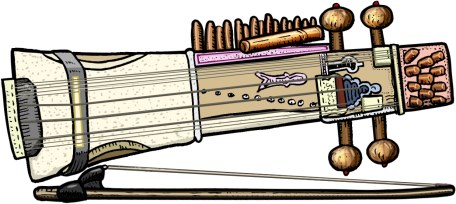 |
| sarinda wd en jira, is related to and may derive from central asian shamans-fiddle qobuz (kobys?) widespread:
rajasthan (surinda) three main strings
manipur north-east india (sananta)
|
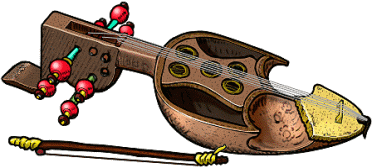 |
| nepali sarangi wd en MB!(?) type of lute, evolved from the <strikeout>rabab</strikeout> includes this and the |
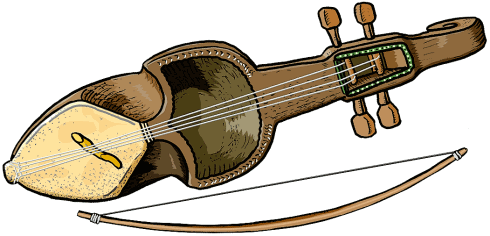 |
| ghaychak wd en mb jira | https://upload.wikimedia.org/wikipedia/commons/c/c0/Ghaychak.jpg |
| in its family evolved from the kobyz wd en jira. (kobyz, ghaychak, sarangi) |
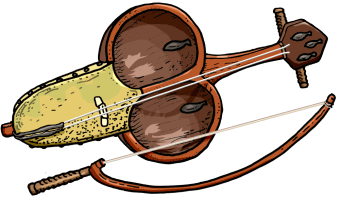 |
| dhodro banam aka Santal lute east & north india (dhodro banam) |
https://upload.wikimedia.org/wikipedia/commons/thumb/c/cb/Dhodro_Banam.jpg/295px-Dhodro_Banam.jpg |
| kachva sitar aka kacchapi vina | Cell 2 |
| sitar wd en mb hindustani sitar seems to have more in common with large uzbek dutar wd en mb than persian setar wd en mb
other sitar types: (distribution and related features suggest a common development)
sada sitar (plain or practice sitar) |
 |
| Cell 1 | Cell 2 |
| Cell 1 | Cell 2 |
| Cell 1 | Cell 2 |
| Cell 1 | Cell 2 |
| Cell 1 | Cell 2 |
| Cell 1 | Cell 2 |
| Cell 1 | Cell 2 |
| surbahar wd en mb effectively a bass sitar. invented c1820 by ghulam muhammad |
Cell 2 |
| Sursingar wd en mb hybrid plucked north indian classical lute invented c1800 by jaffar khan (seniya family) resonator, front and bridge from sitar, upperpart of neck/pegboard like the rabab, tuned and played like rabab, plectrum like sitar. |
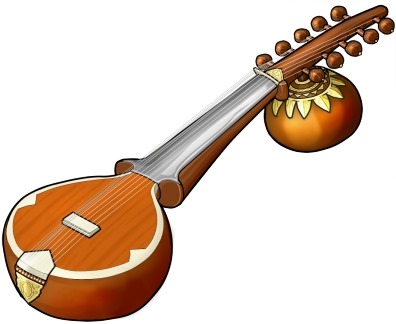 |
| Cell 1 | Cell 2 |
| svaraj fretless long necked plucked lute from bangladesj, it is a bangl version of the bengali/northindian dotara, it ought to be spelled saraj (see esraj) |
Cell 2 |
| esraj a kind of cross between sitar and sarangi, it is a modern variant of dilruba[1] |
 |
| dilruba Dilruba is a compacter, mobiler instrument, is based on the heavier Taus[2] |
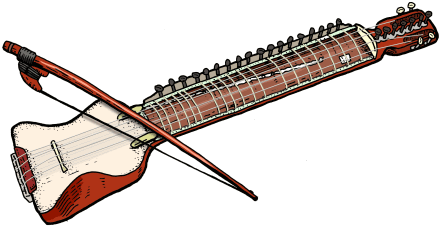 |
| taus |  |
| mayuri-vina |
 |
| yazh | 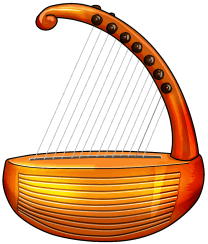 |
| saung gauk |  |
| Cell 1 | Cell 2 |
| Cell 1 | Cell 2 |
| Cell 1 | Cell 2 |
| Cell 1 | Cell 2 |
| bin-sitar | Cell 2 |
| kamaica | Cell 2 |
| ravanhattha | Cell 2 |
| khuur (mongolian fiddles) | 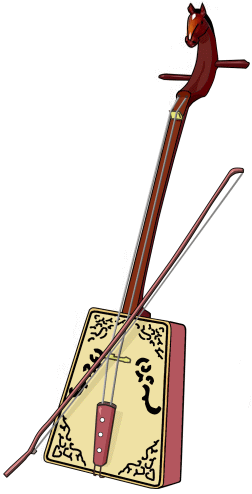 |
| Cell 1 | Cell 2 |
.....
sara
surs
suba
sita
saro
sari
banam(rebs)
rabab-> sarod
https://timesofindia.indiatimes.com/From-Tri-tantri-Veena-to-Sitar/articleshow/21391436.cms and images on https://en.wikipedia.org/wiki/Tritantri_vina and https://en.wikipedia.org/wiki/Setar (compare image on https://en.wikipedia.org/wiki/Sitar ) makes it clear that it is the setar that is evolved from the tritantri veena - the sitar https://beta.musicbrainz.org/instrument/9290b2c1-97c3-4355-a26f-c6dba89cf8ff/ an unrelated (but possible distant cousin) was *named* after the Persian setar.